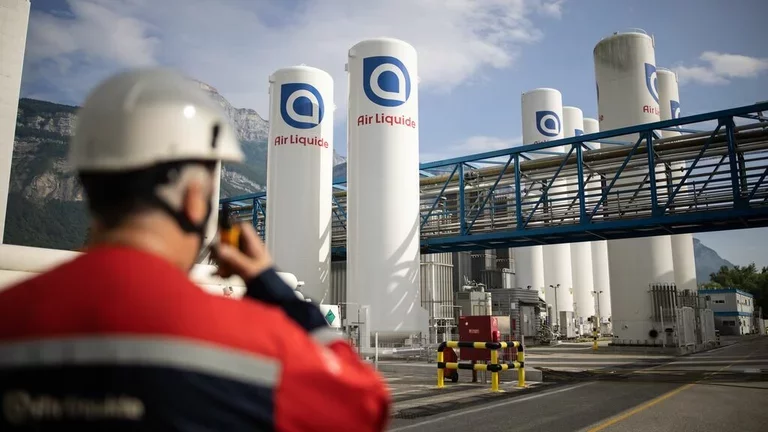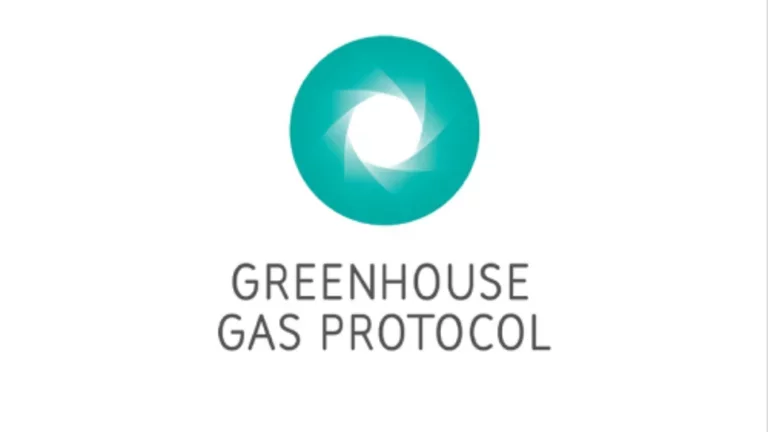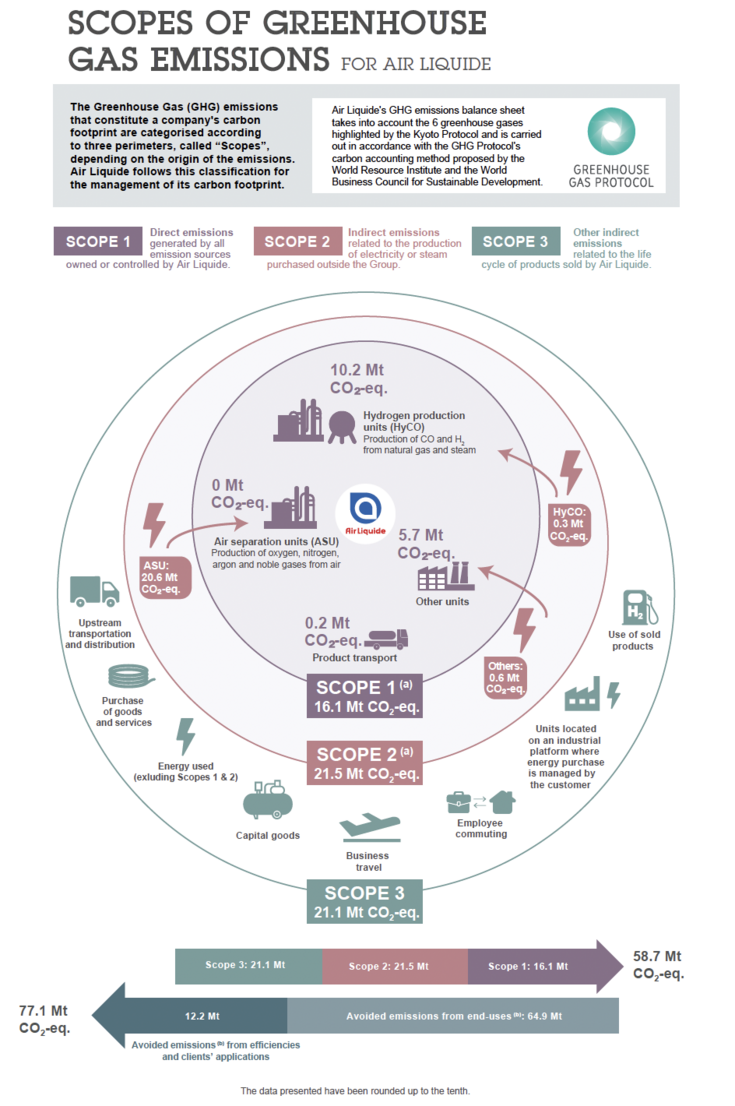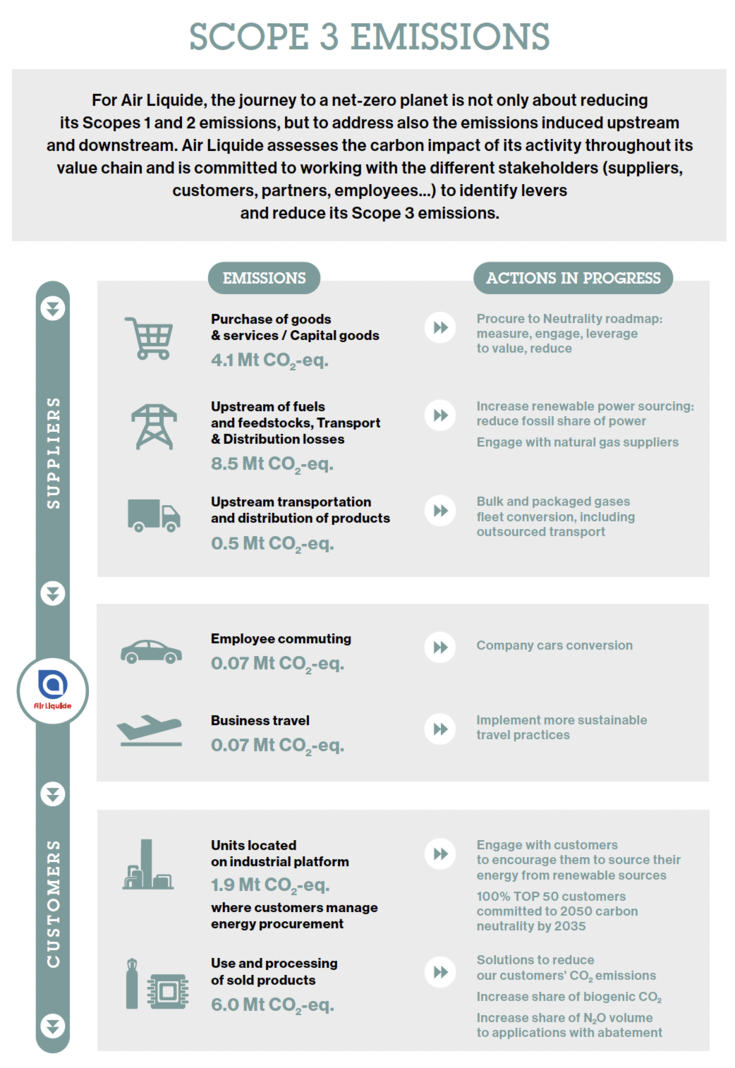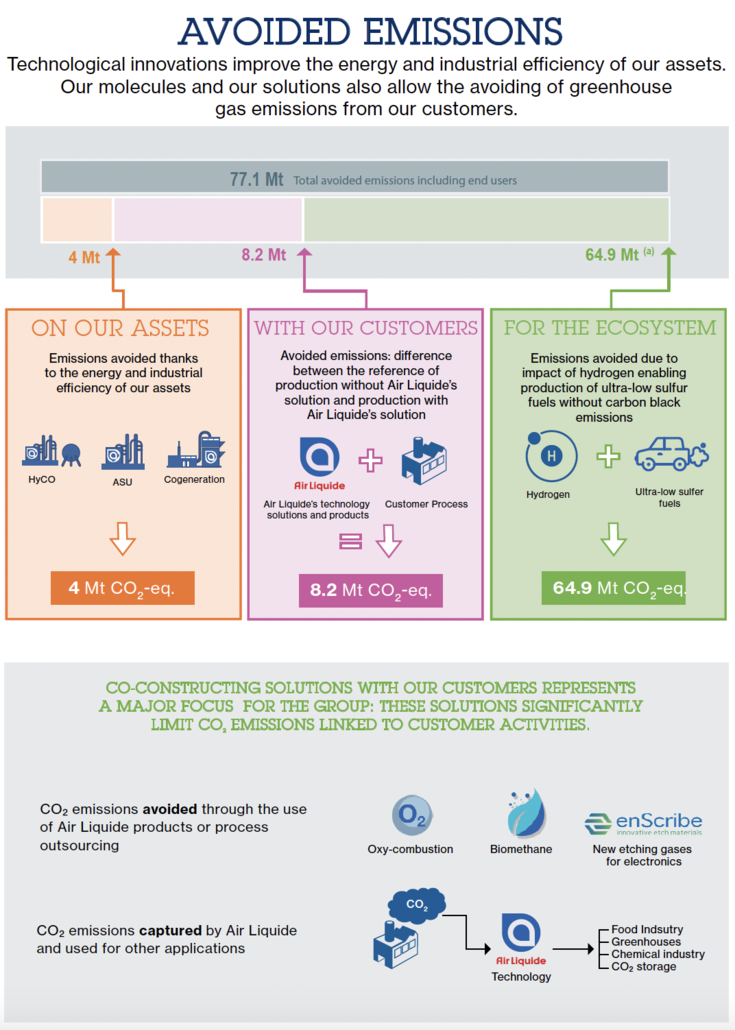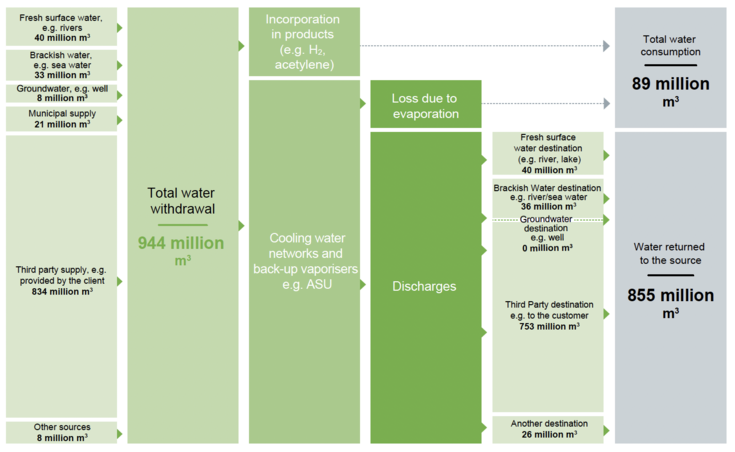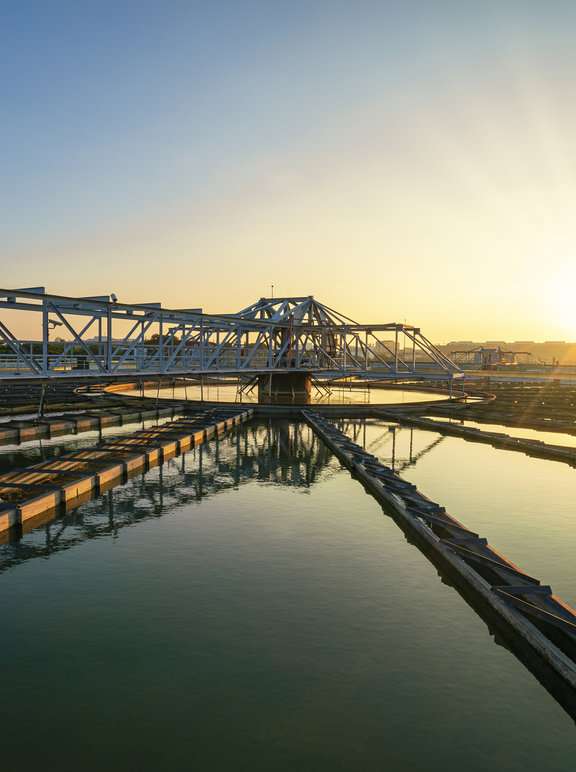Environmental data
The Group's extra-financial reporting is published each year in the universal registration document. The data are audited by independent auditors, whose report is available in the same document.
Greenhouse gas emissions
Scopes of greenhouse gas emissions
The Greenhouse Gas (GHG) emissions that constitue a company's carbon footprint are categorised according to three perimeters, called "scopes", depending on the origin of the emissions. Air Liquide follows this classification for the management of its carbon footprint.
Scope 3 emissions
To improve the management of its carbon footprint, Air Liquide also carries out its Scope 3 assessment which measures its impact on the entire value chain of the products.
Avoided emissions
Air Liquide innovates with technologies to improve energy and industrial efficiency, both within assets and with its customers, thus avoiding greenhouse gas emissions.
Water management
For several years, Air Liquide has set up a working group to improve data collection and better control water management on its production sites in order to reduce consumption, particularly in water stress zones.
Water risk management
In 2020, Air Liquide mapped its sites, using the "Aqueduct 3.0 Water Risk Atlas" map of the World Resource Institute (WRI) to assess the Group's exposure to this risk.
According to this study, 1% of the Group's sites are located in areas that will be considered arid zones in 2030. This assessment takes into account the specific data of each site concerning their location in a hydrological basin, water table and administrative border.
For 35 years, Air Liquide has been a reference in the field of water treatment, offering its customers efficient and easy-to-implement solutions to environmental challenges. The Group continues to help its customers meet stricter regulations, combat water stress and drought with cost-effective solutions.
